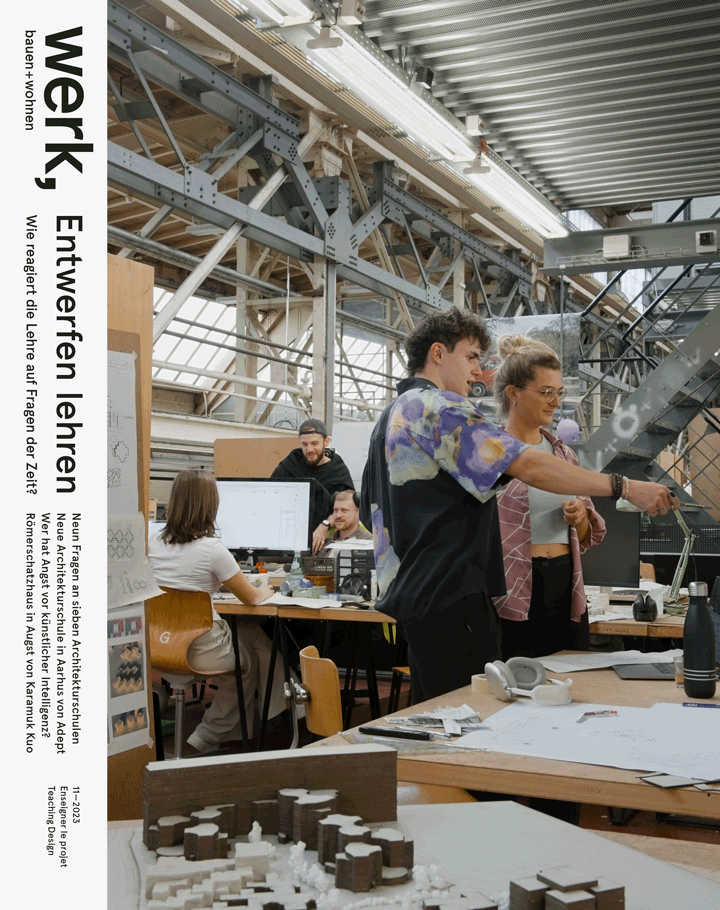werk, bauen + wohnen 11–2023

«The Times They Are A-Changing»
“The new generation doesn’t want to work in offices and design concrete buildings. It is sceptical.” This statement was made by Jakob Brandtberg Knudsen, Dean of architecture at the time-honoured Royal Danish Academy in Copenhagen (founded in 1754 as an art academy, today the academy of architecture, design and conservation). Here he hits the nail on the head: the profession “architect” and consequently the training of architects is currently in a state of flux. The Royal Danish Academy is attempting to free its entire communication from the typical codes. “We want to drop all the blah-blah”, says Knudsen, so that the school’s tradition (Bjarke Ingels, Arne Jacobsen, Jørn Utzon) does not become a burden that attracts only the well-educated middle class and upper class, which would simply repeat history. Architects must adopt a new set of arguments, must be open to much that is unfamiliar, must see themselves (again)as part of society.
Old school models are outdated. Further west in Denmark this is shown by the New Aarch in Aarhaus by Adept, which gives the new curriculum a new built form (p. 33). But also in the east of Switzerland, more precisely in St.Gallen, a new school has been giving new impetus for six years: time for a visiting day (p. 29). Given that in this country, too, students today tend to be sceptical, we asked: are architecture schools in this country rethinking teaching and, if this is the case, then in what ways? We asked this question throughout Switzerland and, obviously, we found a variety of answers. In evaluating the questionnaire one thing becomes clear: the challenges are being met. The uncertainty of the situation in which we find ourselves and the open answers to the questions that are posed today are regarded as enriching and exciting, but never as restrictive. The old and new worlds are combined: drawing and (model) building are still among the basic skills that are taught, in a time of crisis building construction and design are indispensable.
New tools must be understood, not con-demned. So that the urgent questions can be answered by a new generation of architects and not by artificial intelligence. — Jenny Keller, Christoph Ramisch, Roland Züger